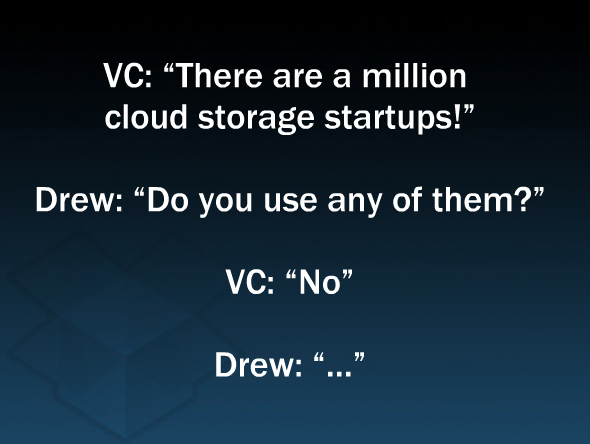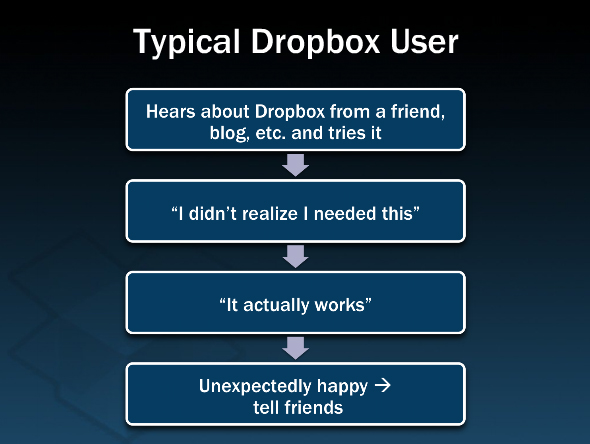Dropbox: how did we survive where others burned out?

This translation is based on the presentation of Drew Houston (Drew Houston) - co-founder and CEO of Dropbox . Therefore, information will be provided in the form of key theses, which Drew has identified as crucial to the success of a startup.
Some facts about how Dropbox now works:
- multi-million user audience 18 months after launch;
- no advertising costs;
- a large number of competitors;
- Most of the work has been done by engineers who, in principle, are not very experienced in marketing.
In 2006, a bunch of cloud storage services were introduced to the market. So why do another?

')
In the comments this slide is called one of the most successful. Really objective answer. Especially since, according to Drew, building an impenetrable, scalable, cross-platform cloud storage architecture is really difficult.
Post on a competitor support forum:
Sersis converted all Word and half Excel documents into files of 0 bytes in size. No words, something I do not have fun.
The classic commandment “learn, learn and learn again”, expressed by another well-known start-uper, passes through the theses through the theses. In Drew, it sounds like this: "Learn early and more often."
The author emphasizes the fact that a good, suitable product and advertising is not necessary. However, the guys didn’t come to this conclusion immediately and at first they bought words from Google, indulged in affiliate programs, etc. And they did another tricky thing - people who came from paid ads, did not see information about the free account. But then they felt ashamed and the team decided to abandon such a move, especially since the economic model that they had invented did not justify itself.
What we did:
- There is a great desire to do everything "according to science." But this is left science, think better with your head;
- Fortunately, we spent all our energy on making a simple working product that would please the users;
- we tore our asses at work;
- hired the smartest people of those who knew;
- “The main thing must always remain the main thing”.
- hire non-engineers;
- follow the mainstream under PR;
- traditional positioning;
- deadlines, procedures, “right approaches”;
- partnerships;
- desire to make a bunch of chips.
Dropbox itself has promoted according to the scheme below:

Plus, we spent serious money on analytics and stimulation of our users to invite their friends. As a result, in 30 days in April, 2.8 million invitations were sent by users.
Results:
- September 2008: 100 thousand users;
- January 2010: 4 million users;
- most came through word of mouth and referral programs;
- monthly we add 15-20% to the number of users.
Source: https://habr.com/ru/post/105244/
All Articles